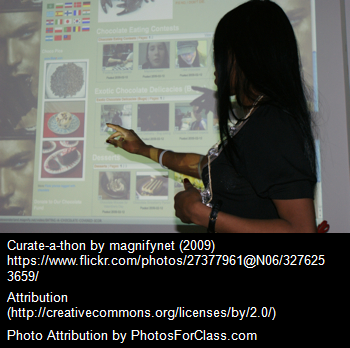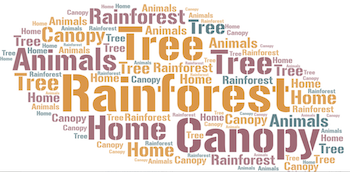1.2 Reading Projects: Unit 1
Choice 2: Curate-a-Thon
 To curate something means to collect, organize, look after, and display or share a collection of some kind. Art curators curate art. Museum curators cure historical artifacts. A content curator is someone who finds, groups, organizes and shares the best and most relevant content on a specific issue.
To curate something means to collect, organize, look after, and display or share a collection of some kind. Art curators curate art. Museum curators cure historical artifacts. A content curator is someone who finds, groups, organizes and shares the best and most relevant content on a specific issue.
Create a curated collection either based on "The Great Kapok Tree" (video found under choice one), a place to which you feel a strong connection (you could even take photos or video there to include in your curation), a place in a favourite movie (ie the woods in Bridge to Terabithia), or a favourite story with a special location. Your collection could include artwork, images / photos (close ups of special objects, zoomed out for "big picture"), sketches, and words that connect to the topic. Your collection will be curated (organized with a focus) by including creative descriptions, descriptive labels, quotes from the text about the place, or a short poem reflecting each object. Your collection can be submitted in a:
- powerpoint
- word processing document with images
- sketchbook or hand created entries (you can take photos of your work, put them into a single document, and submit online OR you can send it/show it to your teacher.)
- images of a display (objects and text) put together
- a video your items with recorded audio
- poster
- blog (if your family has a site where you can do this)
Ideas and Content:
Your collection will be curated (organized with a focus) by including descriptions of each object, or a poem that includes each object, an essay, or other descriptive labeling.
- Each object, drawing, or image reflects something special or meaningful about the story text or your special place.
- Each object, drawing, or image has a description, label, caption, or even a short poem that explains the choice and how it connects to the topic.
Organization: Include a minimum of five objects that reflect the place and feelings about it (either based on "The Great Kapok Tree" or from a single place of importance in another text or movie). The collection should be titled and be organized in a logical way.
Conventions: Writing and presentation is clear and correct capitals and punctuation are used.
Some links for inspiration if you need:
Additional Ideas:
Include word art that shows how you or a character feels about your chosen setting or an item in your collection. You can use without creating an account. Type in your words on the left, click on visualize, and experiment with other options, always clicking on visualize when you want to see the impact of your changes. When you have created your art, you can take a screenshot or choose PRINT and SAVE AS PDF or JPG.

Marks:
Ideas: Your collection will be curated (organized with a focus) by including creative descriptions of each object, or with a poem that includes each object, or essay, or other creative labeling.
Word Choice: Use sensory details (sight, smell, taste, texture, and sound) and includes some figurative language.
Organization: Include a minimum of five objects that show a sense of place. The collection should be titled and be organized in a logical way.
Conventions: Writing or oral presentation is clear and correct punctuation is used (if written) or clear speaking, good expression, and voice that matches mood are used (if spoken/audio recorded).